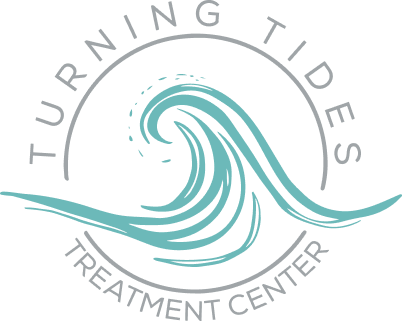Opioid Withdrawal Timeline
In the United States, about 2 million people struggle with opioid dependence or addiction. Embarking on the journey of recovery from opioid dependence is both a challenging and enlightening experience. This article delves into the nuanced stages of the opioid withdrawal timeline, providing a comprehensive overview to aid individuals in navigating through this critical phase toward recovery.
Introduction to Opioid Withdrawal
The process of opiate withdrawal begins when the body, having become accustomed to the presence of opioids, must adapt to their absence. This adaptation process triggers a range of symptoms, broadly categorized as either physical or psychological. The intensity of withdrawal can vary significantly, influenced by factors such as the duration of opioid use, the specific opioid used, the method of consumption, and the individual’s physical health and mental state.
Symptoms of Opioid Withdrawal
Withdrawal symptoms typically commence within a few hours to several days after the last opioid dose. Early symptoms include agitation, anxiety, muscle aches, and increased tearing, followed by more severe symptoms such as abdominal cramping, diarrhea, dilated pupils, nausea, and vomiting. Psychological symptoms, including intense cravings, depression, insomnia, and irritability, also play a significant role, often persisting beyond the acute physical symptoms.
The Stages of Opioid Withdrawal
Understanding the stages of opioid withdrawal is crucial for anyone preparing to navigate this challenging journey. The withdrawal process is typically categorized into three main phases: the early stage, the acute withdrawal phase, and the post-acute withdrawal syndrome (PAWS). Each stage has distinct characteristics and timelines, influenced by various factors including the type of opioid used, duration of use, dosage, and the individual’s physical and psychological health.
- Early Stages (24-48 hours): This initial phase begins as the drug starts to leave the system and the body begins its adjustment to functioning without the opioid. Symptoms during this stage are often described as the onset of flu-like symptoms. Individuals may experience muscle aches and pains, which can range from mild to severe, acting as the body’s initial reaction to the absence of the drug. Other symptoms include anxiety, restlessness, agitation, and an intense craving for the drug. These cravings are not just psychological but are also physiological, as the body is signaling its discomfort and desire for the substance it has grown accustomed to. Insomnia is another common symptom during this stage, coupled with yawning and sweating, which can significantly impact an individual’s comfort and overall well-being.
- Acute Withdrawal Phase (72 hours to 1 week): Often considered the peak of the withdrawal process, the acute phase is when symptoms intensify and become more physically and emotionally challenging. During this time, individuals may experience nausea, vomiting, diarrhea, and abdominal cramping, which are indicative of the body expelling toxins and adjusting to the absence of opioids. Increased heart rate and blood pressure are also common, as the body’s autonomic nervous system responds to the stress of withdrawal. Additionally, individuals may face severe mood swings, depression, and continuing intense cravings, making this phase particularly difficult to endure without support.
- Post-Acute Withdrawal Syndrome (PAWS): This phase can be the most unpredictable and prolonged, lasting for months or even years after the acute withdrawal symptoms have subsided. PAWS encompasses a range of symptoms that primarily affect emotional and psychological well-being. These can include ongoing mood swings, anxiety, low energy, irritability, sleep disturbances, and anhedonia (the inability to feel pleasure). These symptoms are thought to result from the brain’s attempt to regain equilibrium after prolonged exposure to opioids. Unlike the acute phase, PAWS symptoms can come and go, with varying intensity, often triggered by stress or environmental cues associated with past drug use.
Understanding these stages is crucial for anyone undergoing or assisting with opioid withdrawal or opioid addiction treatment. It emphasizes the importance of a comprehensive support system, including medical supervision and psychological support, to navigate the complexities of withdrawal. Recognizing the symptoms and challenges of each stage can empower individuals and their support networks to prepare and respond effectively, fostering a smoother transition through each phase of the withdrawal process.
Factors Affecting the Withdrawal Timeline
The journey through opioid withdrawal is profoundly personal, with a timeline that can vary significantly from one individual to another. Several key factors influence the duration and intensity of withdrawal symptoms, making each person’s experience unique. Understanding these factors can provide valuable insights into the withdrawal process, enabling individuals and caregivers to better prepare for the challenges that lie ahead.
- Type of Opioid Used: The specific opioid and its half-life play a crucial role in determining the onset and duration of withdrawal symptoms. Short-acting opioids, such as heroin and certain prescription painkillers, may lead to earlier onset of withdrawal symptoms, often within 6 to 12 hours after the last dose. Conversely, long-acting opioids, such as methadone, can delay the onset of symptoms, sometimes for up to 30 hours, and can result in a more prolonged withdrawal process.
- Duration and Intensity of Use: The length of time and the amount of opioids used directly impact the body’s level of dependence. Long-term use, especially in high doses, typically results in more severe withdrawal symptoms and a longer recovery time. The body becomes more accustomed to the presence of the drug, making the adjustment process to its absence more challenging.
- Method of Opioid Use: How the opioid was administered—whether it was swallowed, snorted, injected, or smoked—can also affect the withdrawal timeline. Methods that deliver the drug more directly to the bloodstream, such as injection or snorting, often lead to a faster onset of dependence and, consequently, potentially more intense withdrawal symptoms.
- Individual Health Factors: The overall health of the individual, including liver and kidney function, plays a significant role in how the body processes and eliminates opioids. Pre-existing mental health conditions, such as depression or anxiety, can exacerbate withdrawal symptoms and extend the timeline. Additionally, genetic factors can influence how individuals metabolize drugs, impacting the severity and duration of withdrawal.
- Psychological Factors: Psychological and emotional factors are integral to the withdrawal experience. Individuals with strong emotional support networks and coping strategies may find it easier to manage withdrawal symptoms. Mental health conditions can heighten the perception of pain and discomfort, complicating the withdrawal process.
- Environmental and Social Factors: The environment in which an individual undergoes withdrawal can significantly influence their experience. Stressful or unsupportive environments can exacerbate symptoms and prolong recovery. Conversely, a supportive, stress-free environment can facilitate a smoother withdrawal process. Access to medical care and support networks, including counseling and support groups, is also crucial in managing withdrawal symptoms and can affect the timeline.
- Use of Detoxification and Medication-Assisted Treatment (MAT): Participation in a medically supervised detox program or using MAT can significantly alter the withdrawal timeline. Medications like methadone, buprenorphine, and naltrexone can mitigate withdrawal symptoms and cravings, potentially shortening the acute phase of withdrawal and making PAWS more manageable.
Strategies for Managing Opioid Withdrawal
- Medical Detox: Professional supervision during detox can greatly reduce risks associated with withdrawal. Medications may be administered to mitigate symptoms and cravings, providing a safer and more comfortable experience.
- Therapy and Support Groups: Engaging in therapy and support groups offers emotional support and coping strategies during the recovery from opioid use disorder. These resources can address the psychological aspects of addiction, aiding in long-term recovery.
- Lifestyle Changes: Incorporating healthy habits such as regular exercise, nutritious eating, and adequate sleep can enhance the body’s ability to recover and improve overall well-being.
The Role of Medication in Easing Withdrawal Symptoms
Medication-Assisted Treatment (MAT) combines specific medications with counseling and behavioral therapies to effectively treat opioid withdrawal symptoms, aiming to ease physical discomfort and support long-term recovery. Each medication used in MAT serves a unique purpose in the withdrawal and recovery process:
- Methadone: A long-acting opioid agonist that reduces withdrawal symptoms and cravings without the high associated with opioid abuse. Methadone is dispensed daily in a clinic setting, requiring regular patient visits.
- Buprenorphine: A partial opioid agonist that lowers the potential for misuse and is less likely to cause respiratory issues. It’s often combined with naloxone to deter injection, making it safer and more accessible than methadone.
- Naltrexone: An opioid antagonist that blocks opioid receptors, preventing euphoria from opioid use. It’s used post-detox to prevent relapse and is available as a pill or a monthly injection.
- Clonidine: Addresses withdrawal symptoms such as anxiety, agitation, and muscle aches by reducing the activity of the sympathetic nervous system. It does not alleviate cravings but can make withdrawal more comfortable.
- Over-the-counter (OTC) Aids: These can relieve symptoms like diarrhea, nausea, and headaches. When used under healthcare provider guidance, they can complement prescribed medications to manage withdrawal symptoms more effectively.
Integrating these medications into a comprehensive treatment plan can significantly mitigate withdrawal discomfort and facilitate a smoother recovery process. While beneficial, they are most effective when used alongside counseling and other supportive therapies to address the broader aspects of addiction and recovery.

Life After Opioid Withdrawal
The period following opioid withdrawal presents an opportunity for individuals to rebuild their lives, focusing on health, relationships, and personal goals. Continued therapy and support are crucial in preventing relapse, and empowering individuals to maintain sobriety and pursue a fulfilling life.
FAQs
The acute withdrawal phase typically lasts from 72 hours to one week, with symptoms peaking around the third day. The duration and intensity can vary based on individual factors and the specific opioids used.
While it's challenging to avoid withdrawal symptoms entirely, their intensity can be significantly reduced through medical detox programs and the use of specific medications designed to ease withdrawal symptoms.
Withdrawal without medical supervision can pose risks such as severe dehydration, relapse due to unmanageable symptoms, and in extreme cases, life-threatening conditions. Professional oversight ensures safety and comfort throughout the process.
Access to therapy and support groups can be facilitated through local health departments, substance abuse treatment centers, and online platforms dedicated to addiction recovery. Many organizations offer resources for finding local and virtual support options.
While most physical symptoms of withdrawal resolve within a few weeks, some individuals may experience lingering effects, such as sleep disturbances and emotional instability, for months. However, with proper support and treatment, long-term recovery is achievable, allowing individuals to regain a healthy, substance-free life.
Overcome Opioid Addiction in Orange County
Navigating the opioid withdrawal timeline is a pivotal step toward recovery. Armed with understanding and support, individuals can successfully manage withdrawal symptoms, laying a foundation for a renewed life free from opioid dependence.
If you or a loved one are struggling with opioid addiction or another substance use disorder, get in touch with Turning Tides Treatment Center. Our detox and addiction treatment programs are dedicated to helping individuals overcome the challenges of addiction.
Clinically Reviewed by:

Matthew is a licensed marriage and family therapist and clinical supervisor in Orange County, California. Matthew has an extensive history working with the substance abuse and mental health population and is committed to client care with an ethical approach to treatment. Matthew utilizes a solution-focused, cognitive behavioral approach to therapy. He emphasizes the importance of creating a recovery environment which supports deep and meaningful sober connection, a system of accountability, daily structure and healthy routine, and an aftercare plan which will support continued sobriety post-treatment.
